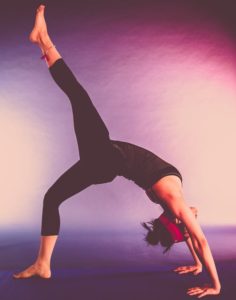3 Straightforward Ways to Fix Your Posture with Exercise
Poor posture is a modern epidemic. Hours spent hunched over desks, scrolling on phones, or slouching on couches lead to rounded shoulders, a forward head position, and weak core muscles—all of which contribute to back pain, stiffness, and even breathing difficulties.
The good news? You can correct your posture with targeted exercises. No fancy equipment or complicated routines needed—just three simple, highly effective moves: Planks, Glute Bridges, and Back Extensions.
Let’s break down why these exercises work and how to do them properly for lasting results.
1. Planks: Strengthen Your Core & Align Your Spine
Why It Helps Posture:
A weak core forces other muscles (like your back and neck) to overcompensate, leading to slouching. Planks strengthen your entire core—abs, obliques, and lower back – helping you maintain an upright posture effortlessly.
How to Do It Correctly:

Start in a forearm plank position, elbows under shoulders, body in a straight line.
Engage your glutes and core—don’t let your hips sag or hike up.
Hold for 20-60 seconds (start small and build up).
If a full plank is too hard, modify by dropping to your knees while keeping your core tight.
Planks also improve shoulder stability, preventing rounded shoulders.
2. Glute Bridges: Activate Your Glutes & Fix “Dead Butt Syndrome”
Why It Helps Posture
Many people have weak, inactive glutes from too much sitting. This leads to anterior pelvic tilt (a swayback posture) and lower back strain. Glute bridges wake up your glutes, pulling your pelvis into proper alignment.
How to Do It Correctly:
- Lie on your back, knees bent, feet flat.
- Squeeze your glutes to lift your hips until your body forms a straight line from knees to shoulders.
- Hold for 2 seconds at the top, then lower slowly.
- Aim for 3 sets of 12-15 reps.
For extra challenge, try single-leg glute bridges (lift one foot off the ground).
Strong glutes reduce lower back pain and improve hip mobility.
3. Back Extensions: Strengthen Your Spinal Erectors & Counteract Hunching
Why It Helps Posture:
Slouching weakens the erector spinae (muscles along your spine). Back extensions strengthen these muscles, helping you stand taller and reducing that “hunched” feeling.
How to Do It Correctly:

Lie face down, arms extended overhead (like Superman).
Lift your chest and legs a few inches off the ground, squeezing your lower back.
Hold for 2-3 seconds, then lower.
Do 3 sets of 10-12 reps.
For a deeper stretch, try cat-cow stretches before back extensions.
Back extensions also improve shoulder blade retraction, pulling your shoulders back naturally.
How Often Should You Do These Exercises?
For the best posture correction:
- Planks: 3-5 times per week (hold longer as you progress).
- Glute Bridges: 3 sets, 3-4 times per week.
- Back Extensions: 2-3 times per week.
* Consistency is key – Just 10-15 minutes daily can make a dramatic difference in 4 – 6 weeks.*
Extra Tips for Faster Posture Improvement
Stretch your chest & hip flexors (tightness here pulls you into bad posture).
Set phone/computer reminders to check your posture hourly.
Walk tall – Just imagine a string pulling your head upward.
Straighten Up
Bad posture isn’t just about looks – it affects energy, confidence, and long-term spinal health. By incorporating planks, glute bridges, and back extensions into your routine, you will strengthen weak muscles, realign your spine, and stand taller effortlessly.












More Stories
Fitness Tech Tips for Older Adults
Reversing Age-Related Heart Damage Through Exercise
Physical Therapy Stretch Bands